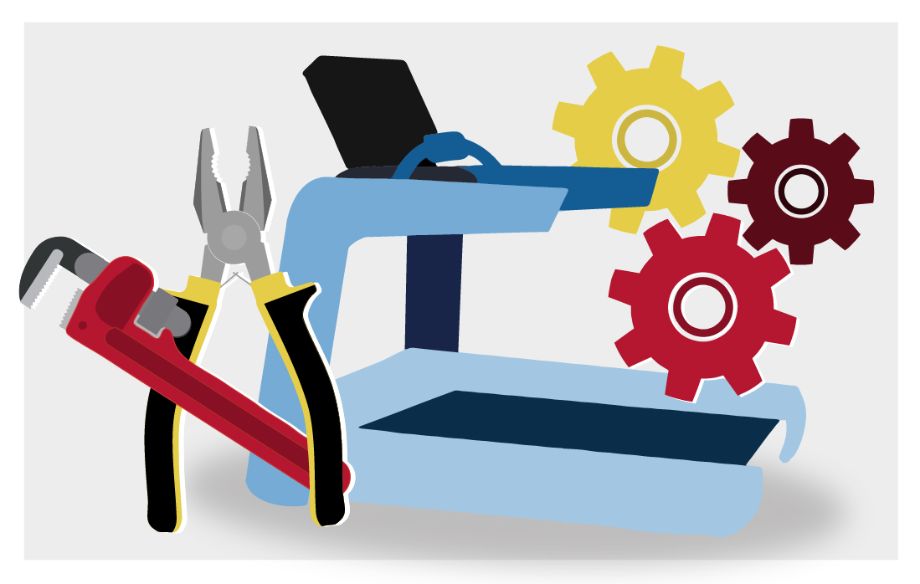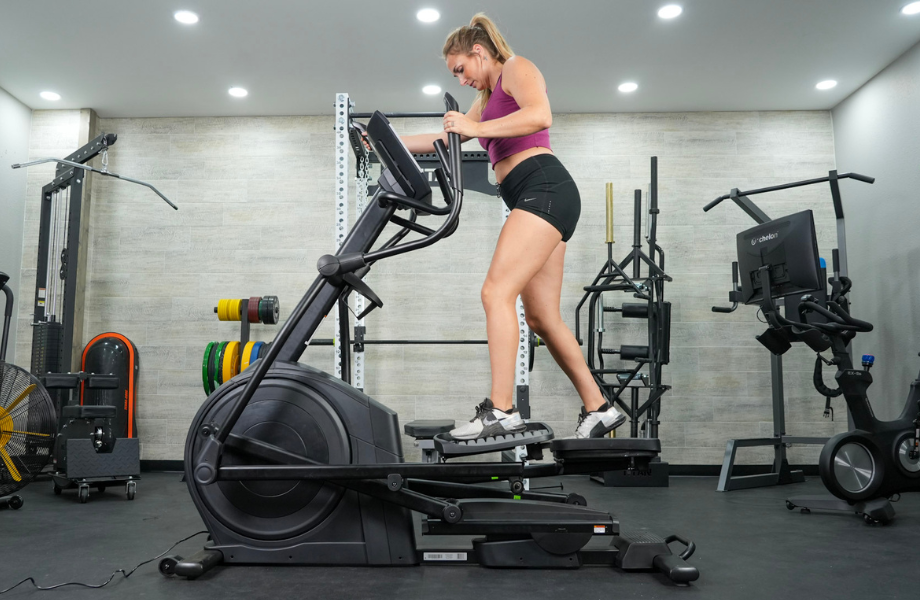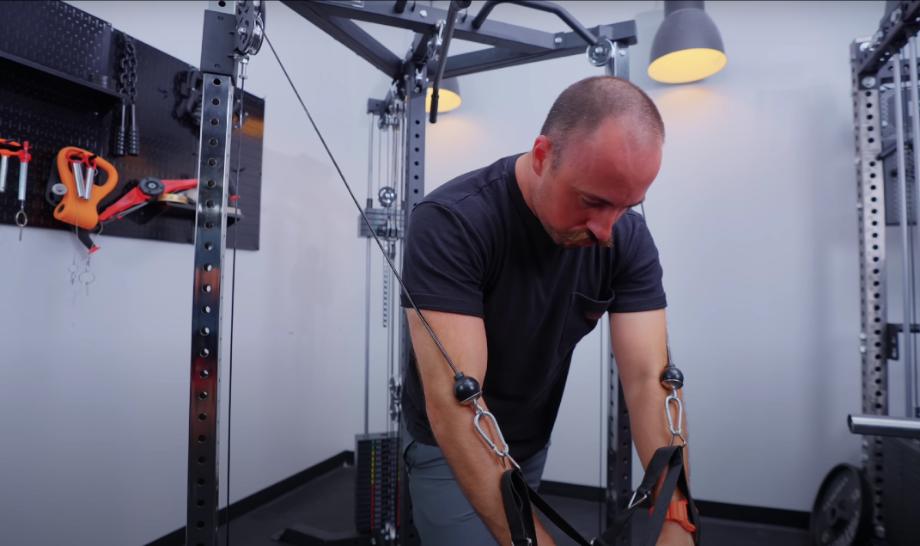You did your due diligence and researched all the best treadmills. You found one that you love, and it’s the perfect addition to your home gym. You use it religiously and look forward to your daily workouts in addition to the helpful benefits from cardio exercise like improved heart health1 as well as better mental well-being and cognitive activity2.
But, one day, a dreaded error code shows up on your display, or your new treadmill simply will not power on. Now what?
Not to worry; learning how to fix a treadmill may be easier than you think.
Like most home gym essentials, treadmills may suffer from the occasional malfunction that requires some quick action. That said, most repairs can be resolved swiftly regardless of your treadmill’s size, brand, or cost. Most issues concern the treadmill belt, console display, treadmill motor, or speed performance. This guide will provide you with the key tips and tricks to help you navigate through any repair needing your attention.
Common Problems
Despite the depth of today’s treadmill market, the same malfunctions can easily plague virtually any silhouette out there. Whether you’re sweating it out on a NordicTrack, ProForm, Horizon, or other top-performing machine, you’re likely to come across some common problems.
So, who are the usual suspects? Common issues that arise with treadmills can include:
- An erratic speed
- A slipping belt
- A non-working center console
- Incline malfunctions
- A belt that stops suddenly mid-workout
- Irregular noises
- A burning smell
- A faulty motor
While these dilemmas may sound irreparable, the solutions can be found in just a few steps. Let’s take a look at how to solve these issues below.
Erratic Speed
Whether you’re using a treadmill for walking or hopping on for a run, a consistent speed is vital to staying safe and maximizing your workout potential. “The belt moves for you, so if you’re not focused, it’s easy to misstep,” adds exercise physiologist Chris Mohr, Ph.D., RD. Likewise, if your treadmill’s speed is erratic, it can become much easier to lose track of your footing.
If you find your treadmill’s speed to be erratic, the problem could stem from a few areas. A damaged or rundown walking belt, lack of lubrication, inappropriate belt tension, or a bad drive motor could all be the source of inconsistent speeds.
First, check your treadmill belt to see if there are any obvious flaws that would call for replacement. If the belt seems to be in good shape, check the belt tension to ensure its taut enough for optimal revolutions. This can also be a good time to lubricate your treadmill to avoid excessive friction between the belt and rollers. If all these things check out, then the problem likely lies with a weak drive motor.
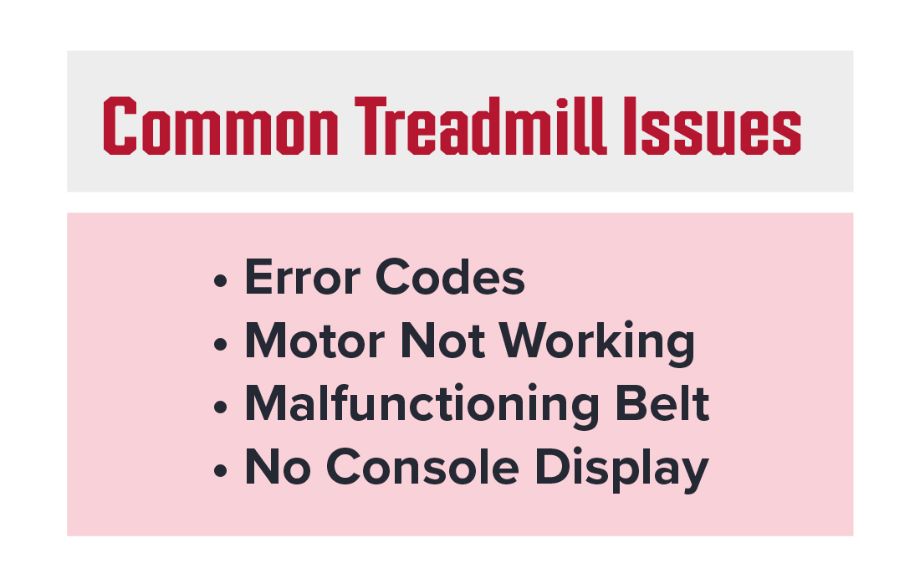
Slipping or Malfunctioning Belt
A stuck or slipping treadmill belt can be an annoying but somewhat inevitable issue every treadmill owner faces at some point. If you feel some hesitation underfoot during a treadmill workout, it’s time to investigate.
A belt that slips and revolves at a different angle than your plane of motion can lead to a dangerous fall. Falling outside when running is one thing, but falling on a moving treadmill is an entirely different animal (trust me). So, it’s important to get to the bottom of this problem as soon as it becomes apparent.
Your walking belt operates by smoothly sliding over the deck and rollers. When there’s unnecessary friction between these surfaces, a belt can begin to slip or stick. Properly lubricating the belt should fix this problem. Be sure to get a treadmill lubricant that’s safe to use on your specific belt—your owner’s manual should have some recommended compounds.
A belt that’s too loose can also slip out of alignment. You can check this by gently pulling up on the belt toward the center of the running deck. A good rule of thumb is that you shouldn’t be able to get more than three fingers between the belt and the deck—a clearance of roughly 3 to 4 inches. If the gap is larger, it’s time to adjust the treadmill belt.
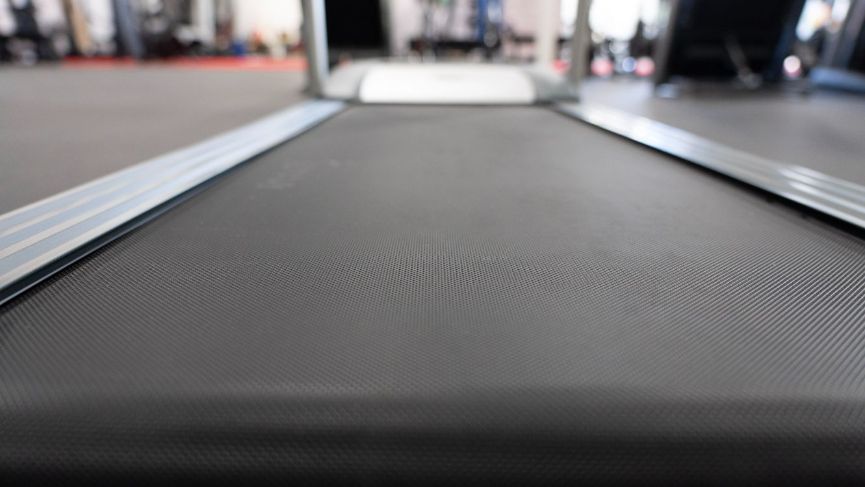
You should also be mindful of the drive belt when looking to address any slippage issues. This belt connects the treadmill motor and first roller under the deck, which transfers the motor’s power to the deck (similar to your car’s fan belt at the front of the engine bay). If the drive belt is misaligned, you can feel that same hesitation underfoot as you would with a misaligned walking belt. Treat the drive belt with an approved belt dressing to prevent any further issues.
You can also employ a little tape trick that can diagnose drive belt issues. Stick a piece of colored tape from the pulley to the roller in a straight line. Power up the treadmill, and when the belt slips, switch it off and check the tape. If the tape has broken apart, your roller and pulley are misaligned and just need some tweaking.
Non-Working Display
You’re all laced up and pumped to run on your treadmill. But, you jump on, and a blank console display stares back at you. While super annoying, this usually has a simple solution. First, determine the power source for your display. If your console display works off batteries, try replacing them.
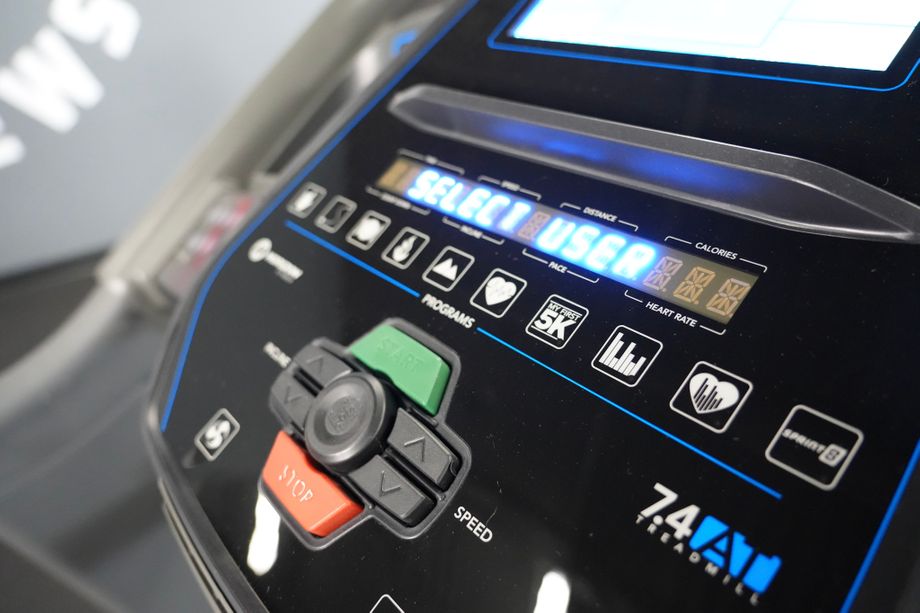
If batteries aren’t the culprit, check the power cord and make sure it’s securely plugged into the wall and that the cord not crimped. In fact, make sure all wires aren’t crimped up and the cable connections are tight. If all looks good, simply unplug your treadmill for 60 seconds to reset the system and then plug it back in. You may also want to check your circuit breakers, as a tripped circuit can lead to a blank treadmill display.
For a display that still won’t function properly after this reset, you may need to contact a brand professional for repairs. Check your user manual to find the appropriate contact information—your treadmill warranty may also cover this service need, so now can be a good time to scroll through your machine’s policy, as well.
Incline Malfunction
Getting a treadmill with incline features is a great way to add variety and challenge to your cardio workouts. While some incline treadmills are adjusted manually, many use a motor to toggle incline or decline angles with a few presses of a button. Since this feature is electronic, there’s a chance your incline may malfunction or not work at times, potentially leading to miscues in your running form or erratic speeds on your treadmill.
If you suspect your incline settings aren’t working properly, the first thing to do is to check your treadmill’s incline. Make sure your treadmill is off and then try to adjust the incline manually; if it doesn’t budge at all, or is very difficult to adjust, you might have a problem with the incline motor.
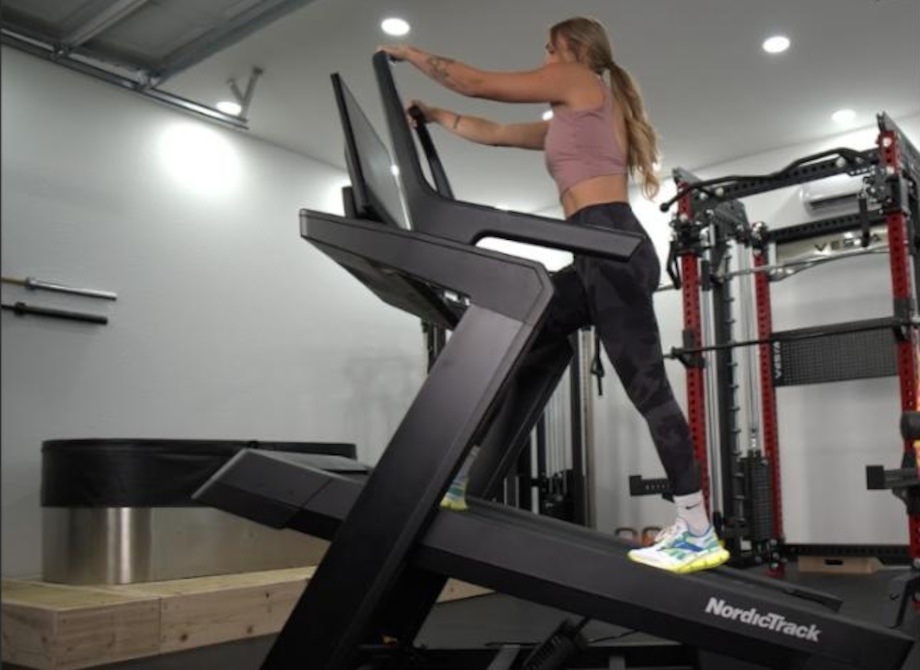
In this case, it’s best to check the user manual for information on how to troubleshoot your treadmill’s incline motor. It may be able to be fixed with a few tools and a bit of time and labor, but if the manual doesn’t have a solution, it may be time to call in a professional for assistance.
Stopping Mid-Workout
Sometimes, your belt may stop suddenly or power down unexpectedly mid-workout. If you experience this halt in progress, there are a few areas worth investigating. First, if your treadmill has a safety key, make sure that the key is securely fitted to its respective slot along the console. A treadmill will stop if the safety isn’t properly engaged.
RELATED: Common Treadmill Injuries and How To Avoid Them
If the safety key isn’t the problem, check the power supply. Replace any batteries as needed, and make sure the power cord is securely plugged into an outlet. Double-check that the cord itself if securely plugged into the treadmill, as well. Once this is done, you can try resetting the machine by unplugging it for at least a minute.
Beyond these steps, you can also check the running belt for any damage or misalignment, as some treadmills have safety features that can shut the machine down if any slipping or damage is sensed. You can also check any console or electrical components for loose or damaged wires. Sometimes, a seized belt can be a faulty motor issue.
Irregular Noises
A treadmill has quite a few moving parts, and because of that, it can make some strange noises from time to time. More often than not, an irregular noise from the treadmill can be traced to loose components on the frame. Turn off your machine and gently shake the treadmill’s handrails or base to identify any unstable areas and tighten up any loose bolts or screws as needed.
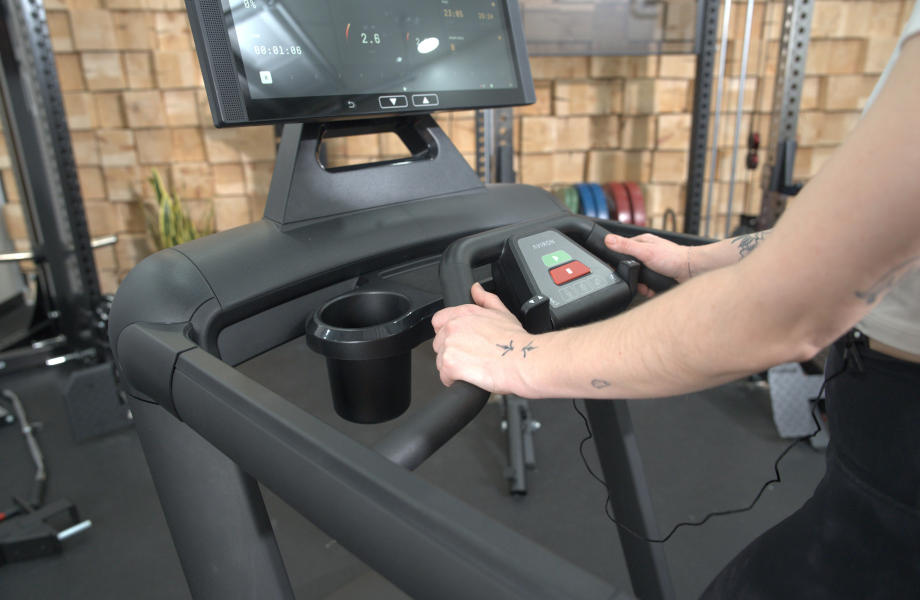
An odd noise coming from your treadmill deck may arise from excess friction between the belt and rollers. Turn off your machine and check for any misalignment on the treadmill belt. Now would also be a good opportunity to lubricate the running belt (more on that later).
RELATED: Can You Put a Treadmill On Carpet?
If the noise isn’t coming from there, you might need to check the rollers, motor, and other components for any wear or damage. If you notice any internal issues with the motor or treadmill rollers, you may need a replacement piece or professional help.
Burning Smell
A burning smell is something that requires immediate attention. It’s important to unplug your treadmill right away if you detect any unfamiliar aromas. The source of this smell is usually one of three things:
- Improper friction between the belt and the deck
- Electrical shorts
- Overheating of the motor
Regular lubrication and taking time to clean your treadmill around the motor and base can help to prevent this problem.
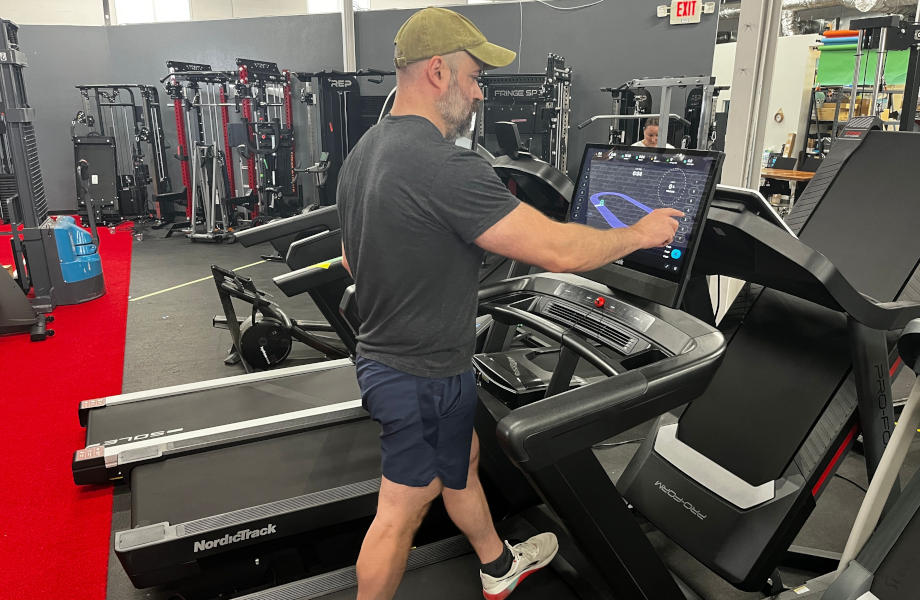
Motor Not Working
A faulty motor can be one of the more expensive treadmill repairs you’ll come across, and it can take on many forms. A treadmill that powers on but doesn’t respond to speed or incline adjustments likely has something wrong with the treadmill motor. Treadmills that power up and immediately go at full speed usually have faulty wiring or circuits, which can also stem from motor-related mishaps. Finally, if your treadmill shuts down mid-workout, the motor may be to blame.
Unfortunately, fixing a treadmill motor is not an easy repair. This usually requires a professional, given the intricacies of treadmill motors. This service doesn’t come cheap if your treadmill’s warranty has expired, either. You can expect to pay at least $200 to $300 for a motor plus the cost of labor. All in, you are likely spending an easy $500, which can be a big pill to swallow.
As such, regular maintenance is vital to your motor’s health and can help prevent repeated repairs. There should be suggestions for regular maintenance in your owner’s manual, so make sure to abide by these suggestions and keep up with your treadmill’s routine maintenance.
RELATED: How To Dispose of a Treadmill
Common Error Codes
Every treadmill carries its own specific error codes unique to the brand and/or model. That said, many treadmills share similar nomenclature when displaying specific malfunctions. Here is a list of the codes you may encounter when you’re wondering how to fix your treadmill:
- E01 error code: This usually means that the console board or display is not communicating with the motor control board. This can result from a faulty data cable (which can be replaced) or poor belt lubrication.
- E02 error code: This code generally refers to a malfunction of either the console display or motor. If the motor is running smoothly, the display likely needs to be repaired or replaced.
- E03 error code: An E03 code most commonly means the motor is not appropriately responding to an increase in speed, which is often caused by a drag in the motor belt. Most drag issues arise from a belt being too tight or too worn.
- E04 error code: This error code means a power surge has interrupted the motor functionality, or it indicates that the motor is disconnected. Simply check to ensure your motor cables are securely fastened and not loose. If necessary, unplug your treadmill, unplug all cables, and then refasten them prior to powering back on.
- E05 error code: Usually, an E05 error means the console is not communicating with the speed sensor. Locate your speed sensor and ensure it’s clean to potentially remedy this problem.
- E06 and E07 error codes: These refer to a problem with the incline, often caused by damage to the wire connecting the deck to the lift motor. Or, the lift motor incline range may need to be readjusted or recalibrated.
- E08 error code: Depending on the treadmill brand, an E08 error can also be used to indicate a problem with the lift motor control (incline).
It’s important to remember that error codes can vary between brands. While the codes listed here are a great guide, you should refer to the owner’s manual for your specific treadmill.

Troubleshooting Tips
While we aren’t treadmill doctors, we can offer a few possible solutions if you need ideas on how to fix your treadmill.
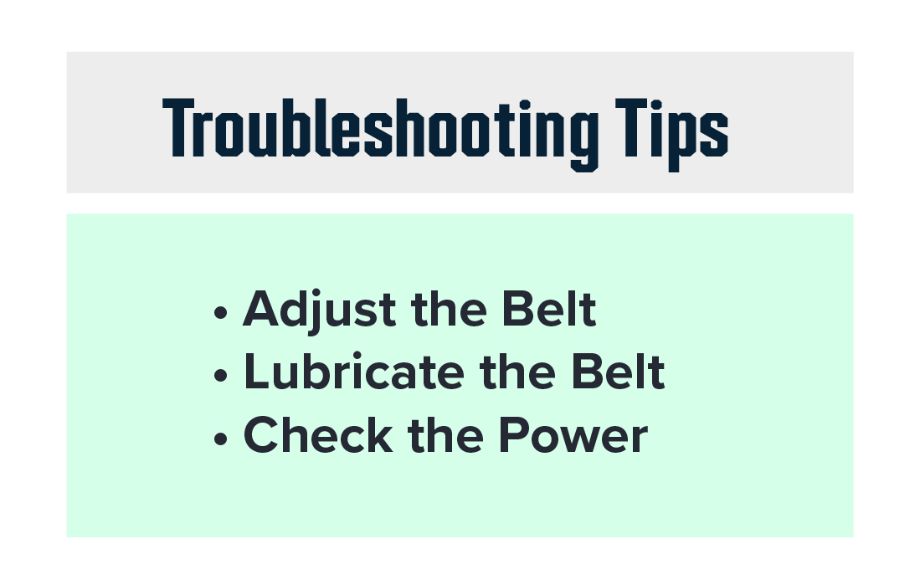
Adjust the Belt
While there are many different options out there for your home treadmill, the belts are usually very similar. Whether you’re using a traditional or manual treadmill, the treadmill belt is usually made from rubber and comes in one of three different thicknesses: single-ply, two-ply, or four-ply. The steps to adjust the belt on both treadmill styles are the same and depend on whether you have a two-adjustment or one-adjustment bolt system.
To know which style you have, you need to inspect the right side of the rear roller. If the bolt there has an Allen wrench head, you have a two-adjustment bolt style.
To adjust a two-adjustment bolt style, power down and unplug your treadmill, then use the Allen wrench to turn both the rear roller bolts clockwise one quarter of a turn and check the walking belt. If the belt still needs to be tightened, turn it again.
Conversely, if you need to loosen your belt, use the Allen wrench to turn both rear roller bolts counter-clockwise in quarter-turn increments and check the tension on the belt.
One-adjustment bolt styles are adjusted by turning only the right rear tension bolt and holding the tension nut on the end while putting a second wrench on the bolt head. Again, turn the wrench in small increments to either tighten (clockwise) or loosen (counter-clockwise) your walking belt until the tension is right.
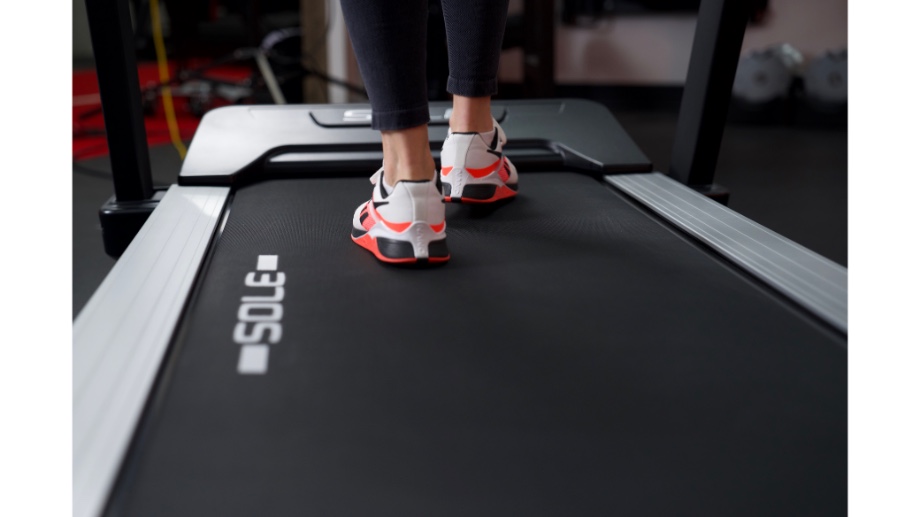
Lubricate the Belt
As the saying goes, the best offense is a good defense. The same goes for treadmills; regular treadmill maintenance helps prevent trouble down the road. “Routine maintenance and cleaning will help reduce signs of wear and tear on your treadmill, plus it’ll aid in avoiding costly repairs on your fitness equipment,” explains gym owner Kate Meier, CPT, USAW-L1, CF-L1. Check your user manual for maintenance tips and instructions, but lubricating your belt should be part of regular treadmill maintenance to avoid any excessive friction.
Many manufacturers have lubricants specifically designed for their line of treadmills. It’s a good idea to purchase some directly from the manufacturer if you don’t receive lubricant with your treadmill purchase. Check your owner’s manual for explicit guidance on appropriate treadmill lubricants that can be used.
Word to the wise: Never use WD-40, Vaseline or petroleum-based lubricants on your treadmill.
All treadmills require a 100% silicone lube, which comes in two forms: silicone spray or silicone liquid. Both are applied in a similar fashion, as silicone liquid should be transferred into a spray bottle. To treat your treadmill, use a spray bottle (if using liquid silicone), paper towels, a towel, and a screwdriver.
If possible, place your treadmill on a towel or put some rags around and under it to catch any lube that may drip. Then, expose the lower portion of the treadmill belt, loosening the rollers with a screwdriver and lifting the edges of the belt. Spray the lubricant on the deck in a uniform fashion, using the paper towels to wipe off any excess lube. Apply a thin layer along the entire running belt, as well, to ensure there’s proper and uniform lubrication. Screw everything back in place, and you’re ready to go.
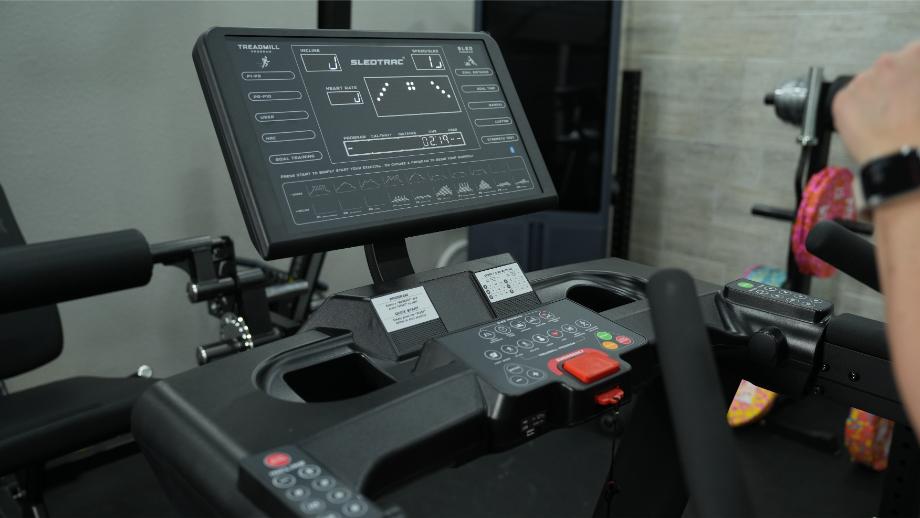
Check the Power
Now, you may be thinking, “Who wouldn’t check the power?” when their treadmill won’t turn on. Suffice it to say, it happens. A broken power cord, tripped circuit breaker, faulty power switch, or wiring failure can all prevent a treadmill from powering up.
The first thing to check is the power cord to ensure it’s not crimped and is securely fastened to the outlet in the wall. Next, check your circuit breakers to see if they’ve been tripped and need to be reset. You also want to look at the power switch on the base of your treadmill and all wiring to make sure they’re secured. Generally, checking and correcting these things will get your treadmill back in working order in no time.
How to Fix a Treadmill: Final Thoughts
As the owner of any piece of fitness equipment, you should partake in regular maintenance to prevent any unnecessary problems. Even with regular care and upkeep, though, the truth is that most treadmills will eventually run into one of the common issues described here. Understanding how to fix a treadmill and troubleshoot issues that arise can help save you money and time with some easy DIY fixes.
If any issues arise, here’s a quick checklist of things to troubleshoot:
- Immediately power down the treadmill
- Check that the power supply is connected properly (replace batteries if needed)
- Look for any damage, wear, or misalignment on the treadmill belt
- Tighten up any loose parts along the treadmill frame
- Check wiring for any damage or crimping
- Call up a professional if all else fails
- Keep up with routine maintenance to minimize issues
How to Fix a Treadmill FAQs
Is it worth fixing my broken treadmill?
Generally, fixing a treadmill is much more affordable than purchasing another machine outright. Depending on the part (or parts) that either need to be fixed or replaced, the cost of a treadmill repair is minimal compared to the cost of buying a new one. That said, there are treadmills on the market that you can buy for $500 to $600. If your treadmill is over 10 years old and the cost to repair is greater than $400, you may want to consider one in this price range instead of a full-blown repair.
RELATED: Treadmill Buying Guide
Why would my treadmill motor not be working?
Surprisingly, problems with a treadmill motor usually stem from issues elsewhere. Regular maintenance and lubrication can prevent many problems that cause a motor to burn out and stop working.
Most commonly, motors break down when there is too much friction between the belt and deck. Some motor problems are outside of our control, though. Faulty wiring, motor control failures, or electrical surges can cause a motor to stop working. Follow the troubleshooting tips in this article to diagnose the source.
How long do treadmills last?
Most manufacturers report that a treadmill’s lifespan ranges from seven to 12 years. These numbers are largely dependent on the quality of the treadmill, the frequency of use, and equipment maintenance provided.
How do I get new parts for my treadmill?
Getting new parts for a treadmill can be as simple as a Google search. Before looking to purchase a part, though, be sure to check your treadmill’s warranty. Some warranties will cover issues with treadmill parts, so you can get the needed component directly from the manufacturer.
If the warranty has passed or doesn’t cover the component you need, hop on the internet and do some searching to find and price out the part. Most parts can be found on Amazon or the manufacturer’s website.
References
- American Heart Association. (2024, January 18). Endurance Exercise (Aerobic). https://www.heart.org/en/healthy-living/fitness/fitness-basics/endurance-exercise-aerobic
- Gomez-Pinilla, F., & Hillman, C. (2013). The influence of exercise on cognitive abilities. Comprehensive Physiology, 3(1), 403–428. https://doi.org/10.1002/cphy.c110063





